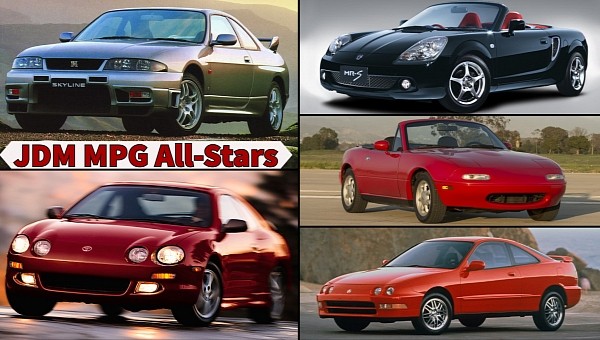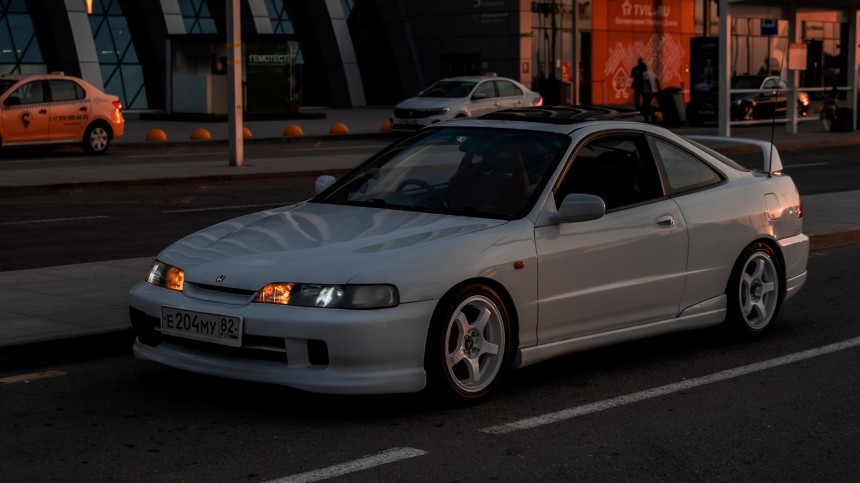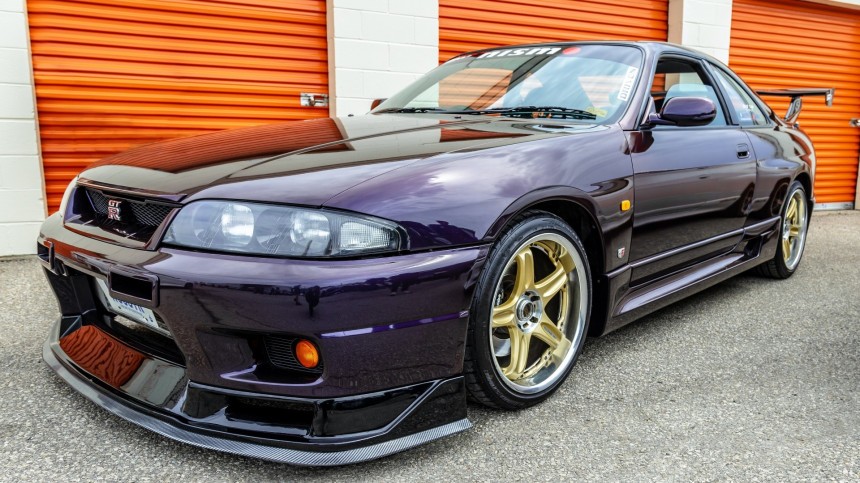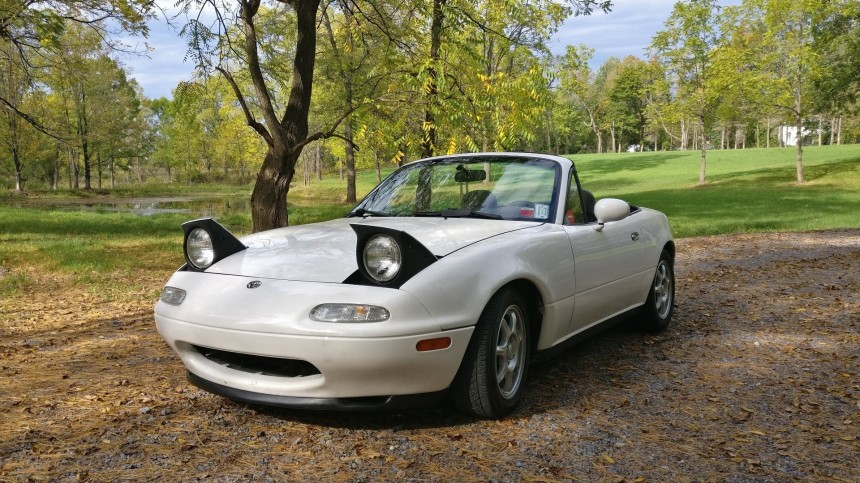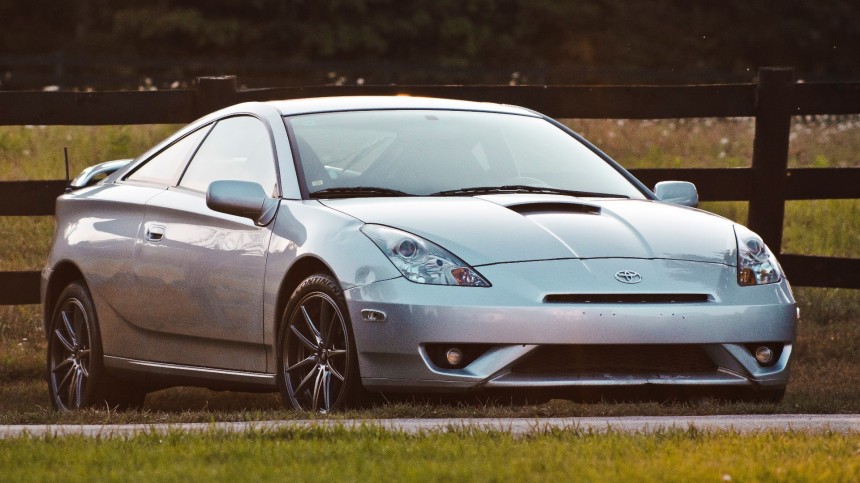When it comes to sports cars, the last thing owners want to consider is fuel economy, as these vehicles are more about exciting performance rather than excessive penny-pinching. However, there are certain 90s-era JDM icons that can offer the best of both worlds, providing drivers with lots of fun without them having to worry about rising gas prices.
In a sea of coupes and cabriolets from the 90s, Japanese cars stood out because of two distinguishing characteristics: reliability and fuel efficiency. These traits weren't just evident in their economical sedans; they translated onto their eclectic range of sporty coupes as well. Given the trustworthy reputation these cars developed over the years, it's easy to assume that driving them won't break the bank.
Fast forward a few decades, and gas prices are suddenly nowhere near what they used to be. What was then a frivolous pastime of speeding through empty roads can now turn into instant regret for the budget conscious. The thing is, not all 90s JDM sports cars at the time shared the same redeeming qualities either; some are notorious for having even worse MPG figures than their USDM rivals. Discerning which 90s JDM sports car to get in the used market at a time when gas prices are likely only getting steeper can be tricky. After all, that era gave birth to so many JDM legends, such as the Mazda RX-7, Nissan Skyline GT-R and Toyota Supra, to name a few.
Before you go out and search for that 90s Japanese dream car you've always wanted to drive though, perhaps it's worth factoring in its fuel economy. These aging beauties won't exactly perform as well as they did fresh from the factory, so if multiple repair expenses are to be expected, then why not save on fuel expenditure while you're at it, right? Fortunately, sporty 90s JDM cars still exist on the road today, and a handful of them can actually offer a less-costly good time as long as their motors are still running properly. Here are the top 5 90s JDM coupes you can get without having to scream “highway robbery” during your next refuel.
Despite sharing parts with Honda's extremely popular Civic, the Integra was able to stand on its own with its streamlined styling coupled with the same trademark reliability. Sure, its rock-solid 1.8-liter four-cylinder engine was good enough to keep it running decades later. However, what's even better is that it was also efficient enough to run for longer without using up as much fuel as other competing sports cars from that era.
The third-generation model has a combined (city and highway driving) fuel economy of 25 mpg, while the older second-generation Acura Integra, in particular, was rated a tad higher at 26 mpg.
For an iconic nameplate bearing the moniker “Godzilla,” the Skyline GT-R could be mistaken by some as a fuel-chugging fire-breather. That's not exactly the case with the R33, which was released between 1995 to 1998; it was surprisingly economical.
Don't let its combined 29 MPG figures fool you though, it's still a quick car capable of doing a 0 to 62 mph run in under 5 seconds. It turns out you can have your cake and eat it too.
Last but not least, they're pretty fuel-efficient, with a combined MPG of 29 for the second-generation Miata NB. Like with the Integra, the older generation Mazda MX-5 NA also had slightly better fuel economy at 30.2 MPG.
The 6th generation Celica (ST205) might be known to fans as a homologated rally monster, but some might not realize it was also an unassumingly economical sports car. It boasts an impressive 29.8 combined MPG.
These figures got even better with its successor, the seventh-generation Toyota Celica (T230). Its base variant paired a lightweight chassis weighing only around 2,300 lbs (1,075 kg) with an engine geared towards fuel economy, achieving a combined 30.5 MPG. As a bonus, increased reliability in later models only compliments what's already a decent fuel-saving sports car, to begin with.
Released in late 1999, the Toyota MR-2 Spyder came out at the peak of 90s sports car fuel-efficiency technology. Sporting the same 1ZZ FE motor found on the seventh-generation Celica GT base variant, the MR-S was destined to be as economical as it was peppy. Except it wasn't just utilizing an engine known for fuel economy, but also a chassis that's as light as that of a Mazda Miata.
Having fewer seats than a Celica T230 and being lighter overall allows its engine to make the most out of a full tank of gas, reaching a combined 31.5 MPG. Good things do indeed come in small packages, and Toyota's discontinued 90s gem proves that you don't have to go broke from fuel expenses to enjoy a good drive.
For more JDM goodness, check out our video:
Fast forward a few decades, and gas prices are suddenly nowhere near what they used to be. What was then a frivolous pastime of speeding through empty roads can now turn into instant regret for the budget conscious. The thing is, not all 90s JDM sports cars at the time shared the same redeeming qualities either; some are notorious for having even worse MPG figures than their USDM rivals. Discerning which 90s JDM sports car to get in the used market at a time when gas prices are likely only getting steeper can be tricky. After all, that era gave birth to so many JDM legends, such as the Mazda RX-7, Nissan Skyline GT-R and Toyota Supra, to name a few.
Before you go out and search for that 90s Japanese dream car you've always wanted to drive though, perhaps it's worth factoring in its fuel economy. These aging beauties won't exactly perform as well as they did fresh from the factory, so if multiple repair expenses are to be expected, then why not save on fuel expenditure while you're at it, right? Fortunately, sporty 90s JDM cars still exist on the road today, and a handful of them can actually offer a less-costly good time as long as their motors are still running properly. Here are the top 5 90s JDM coupes you can get without having to scream “highway robbery” during your next refuel.
Acura Integra Coupe (2nd/ 3rd generation)
The third-generation model has a combined (city and highway driving) fuel economy of 25 mpg, while the older second-generation Acura Integra, in particular, was rated a tad higher at 26 mpg.
Nissan Skyline GT-R (R33)
Don't let its combined 29 MPG figures fool you though, it's still a quick car capable of doing a 0 to 62 mph run in under 5 seconds. It turns out you can have your cake and eat it too.
Mazda Miata (NA/NB)
There's a good reason Mazda sold so many Miatas in the 90s. For starters, these were relatively cheap cabriolets which also happened to be head-turners. Second, they were known to have fantastic handling characteristics thanks to their low center of gravity and light weight of just over 2,000 lbs (950 kg).
Last but not least, they're pretty fuel-efficient, with a combined MPG of 29 for the second-generation Miata NB. Like with the Integra, the older generation Mazda MX-5 NA also had slightly better fuel economy at 30.2 MPG.
Toyota Celica (6th/7th generation)
These figures got even better with its successor, the seventh-generation Toyota Celica (T230). Its base variant paired a lightweight chassis weighing only around 2,300 lbs (1,075 kg) with an engine geared towards fuel economy, achieving a combined 30.5 MPG. As a bonus, increased reliability in later models only compliments what's already a decent fuel-saving sports car, to begin with.
Toyota MR-S Spyder
Having fewer seats than a Celica T230 and being lighter overall allows its engine to make the most out of a full tank of gas, reaching a combined 31.5 MPG. Good things do indeed come in small packages, and Toyota's discontinued 90s gem proves that you don't have to go broke from fuel expenses to enjoy a good drive.
For more JDM goodness, check out our video:
